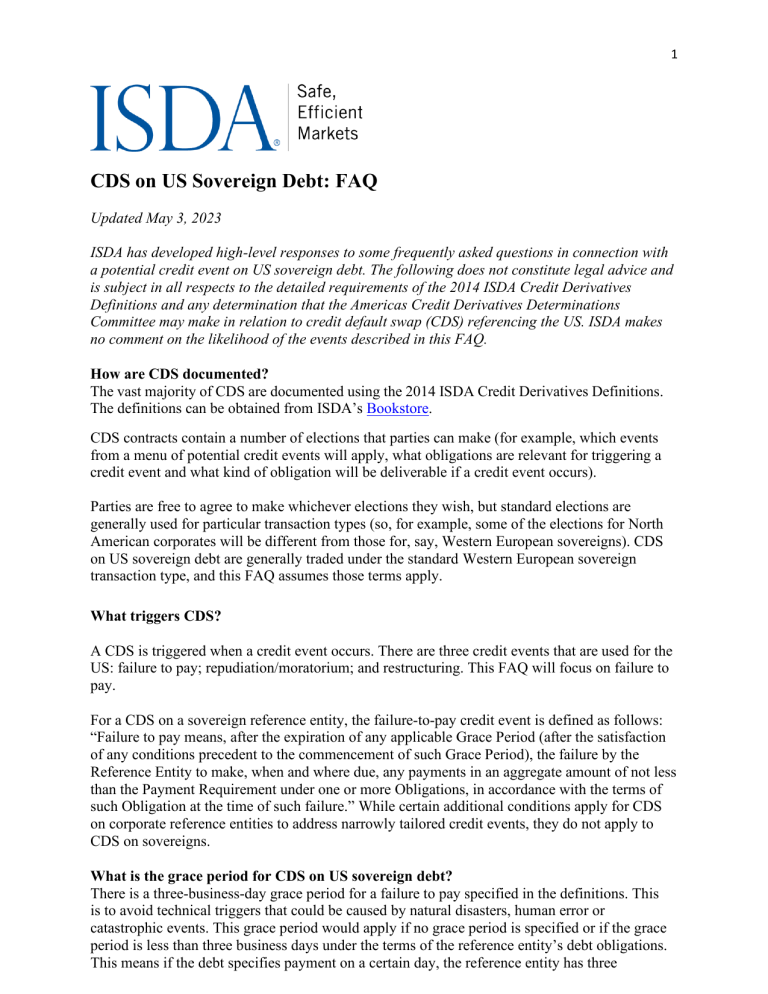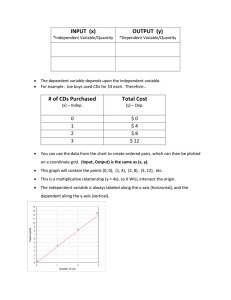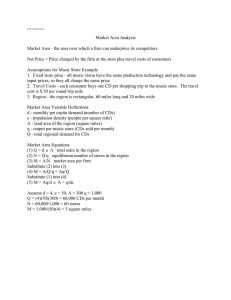
1 CDS on US Sovereign Debt: FAQ Updated May 3, 2023 ISDA has developed high-level responses to some frequently asked questions in connection with a potential credit event on US sovereign debt. The following does not constitute legal advice and is subject in all respects to the detailed requirements of the 2014 ISDA Credit Derivatives Definitions and any determination that the Americas Credit Derivatives Determinations Committee may make in relation to credit default swap (CDS) referencing the US. ISDA makes no comment on the likelihood of the events described in this FAQ. How are CDS documented? The vast majority of CDS are documented using the 2014 ISDA Credit Derivatives Definitions. The definitions can be obtained from ISDA’s Bookstore. CDS contracts contain a number of elections that parties can make (for example, which events from a menu of potential credit events will apply, what obligations are relevant for triggering a credit event and what kind of obligation will be deliverable if a credit event occurs). Parties are free to agree to make whichever elections they wish, but standard elections are generally used for particular transaction types (so, for example, some of the elections for North American corporates will be different from those for, say, Western European sovereigns). CDS on US sovereign debt are generally traded under the standard Western European sovereign transaction type, and this FAQ assumes those terms apply. What triggers CDS? A CDS is triggered when a credit event occurs. There are three credit events that are used for the US: failure to pay; repudiation/moratorium; and restructuring. This FAQ will focus on failure to pay. For a CDS on a sovereign reference entity, the failure-to-pay credit event is defined as follows: “Failure to pay means, after the expiration of any applicable Grace Period (after the satisfaction of any conditions precedent to the commencement of such Grace Period), the failure by the Reference Entity to make, when and where due, any payments in an aggregate amount of not less than the Payment Requirement under one or more Obligations, in accordance with the terms of such Obligation at the time of such failure.” While certain additional conditions apply for CDS on corporate reference entities to address narrowly tailored credit events, they do not apply to CDS on sovereigns. What is the grace period for CDS on US sovereign debt? There is a three-business-day grace period for a failure to pay specified in the definitions. This is to avoid technical triggers that could be caused by natural disasters, human error or catastrophic events. This grace period would apply if no grace period is specified or if the grace period is less than three business days under the terms of the reference entity’s debt obligations. This means if the debt specifies payment on a certain day, the reference entity has three 2 business days to make the payment before a credit event could be triggered. What obligations can trigger a failure-to-pay credit event for CDS on US sovereign debt? The term ‘obligations’ for CDS on the US is limited to the payment or repayment of borrowed money. So, only a failure to make a payment due on borrowed money can trigger a CDS failure to pay credit event. Are CDS triggered by a declaration by a rating agency that the reference entity has been downgraded or is in default? No. What is the process for determining a credit event? All firms entering into CDS transactions using the standard ISDA documentation have agreed to be bound by the decisions reached through the process for determining a credit event set out in the CDS definitions. This process is fair, transparent and well tested, and was developed working closely with global regulators. The rules governing this process can be found at www.cdsdeterminationscommittees.org/dc-rules/. Under these rules, credit events are determined by one of five regional Credit Derivatives Determinations Committees (DCs). An event with respect to the US would be dealt with by the Americas DC. The process begins when a market participant submits a question to the DC for the relevant region. Any market participant with one or more CDS transactions can raise a question. A question is raised by submitting it, along with publicly available information evidencing the event, using an online form on the DC website. After a question is submitted, it must be accepted by one of the members of the appropriate DC. This step is included in order to filter out frivolous questions. Once a question is accepted, the DC will meet within a defined time frame to consider it. The DC will weigh the publicly available evidence and vote on whether a credit event has occurred within the terms of the CDS definitions. It should be noted that the DC simply applies the definitions to the public facts – it is not empowered to decide whether, as a matter of policy, a credit event should or should not occur in particular circumstances. As soon as a vote has occurred, the determination is posted on the DC website. Each DC member’s vote is made public. Requests to the DCs and updates following meetings of the DCs are posted on the DC website at www.cdsdeterminationscommittees.org/. Further details of the operation of the DCs are available at www.cdsdeterminationscommittees.org/about-dc-committees/. Who are the members of the DCs? Each DC consists of up to 10 voting dealers and five voting non-dealers, plus up to an additional two consultative (non-voting) dealers and one consultative non-dealer. The dealers are selected annually according to (and only to) their CDS trading volume over the past year and their compliance with certain requirements, notably to participate in CDS auctions. Non-dealers are selected annually at random from a pool of buy-side market participants meeting certain specified size criteria. A list of the firms that are members of the DCs is available on the DC website under Quicklinks. 3 Would a credit event on the US lead to massive payments by protection sellers? No. According to the Depository Trust & Clearing Corporation’s Trade Information Warehouse, gross notional outstanding of CDS on US sovereign debt totaled $11.6 billion at the end of March 2023. Gross notional measures the sum of CDS contracts bought (or equivalently sold) for all warehouse contracts in aggregate. Net notional outstanding of CDS contracts on US sovereign debt was $5.0 billion at the end of Mach 2023. Net notional is calculated as the sum of the net protection bought by net buyers (or equivalently net protection sold by net sellers). It is impossible for any one firm selling protection to have more than $5.0 billion in exposure. Given there are many net sellers, any one seller’s exposure is likely to be far less. It’s also important to note that the potential payout of $5.0 billion would be offset by the postcredit event value of the underlying obligations. For example, if the CDS auction showed the value of debt to be (hypothetically) 40%, the maximum aggregate amount payable would be 60% of $5.0 billion or $3.0 billion. Furthermore, in this example of the $3 billion payable, a large proportion is likely to have been transferred already in the form of margin. Where can I get data on CDS exposures? Data on CDS exposure on US sovereign debt and for the top 1,000 reference entities is available here: www.dtcc.com/data-services/market-aggregates-and-analytics/cds-kinetics. Regulators have access to additional data, including individual firm CDS exposures.



